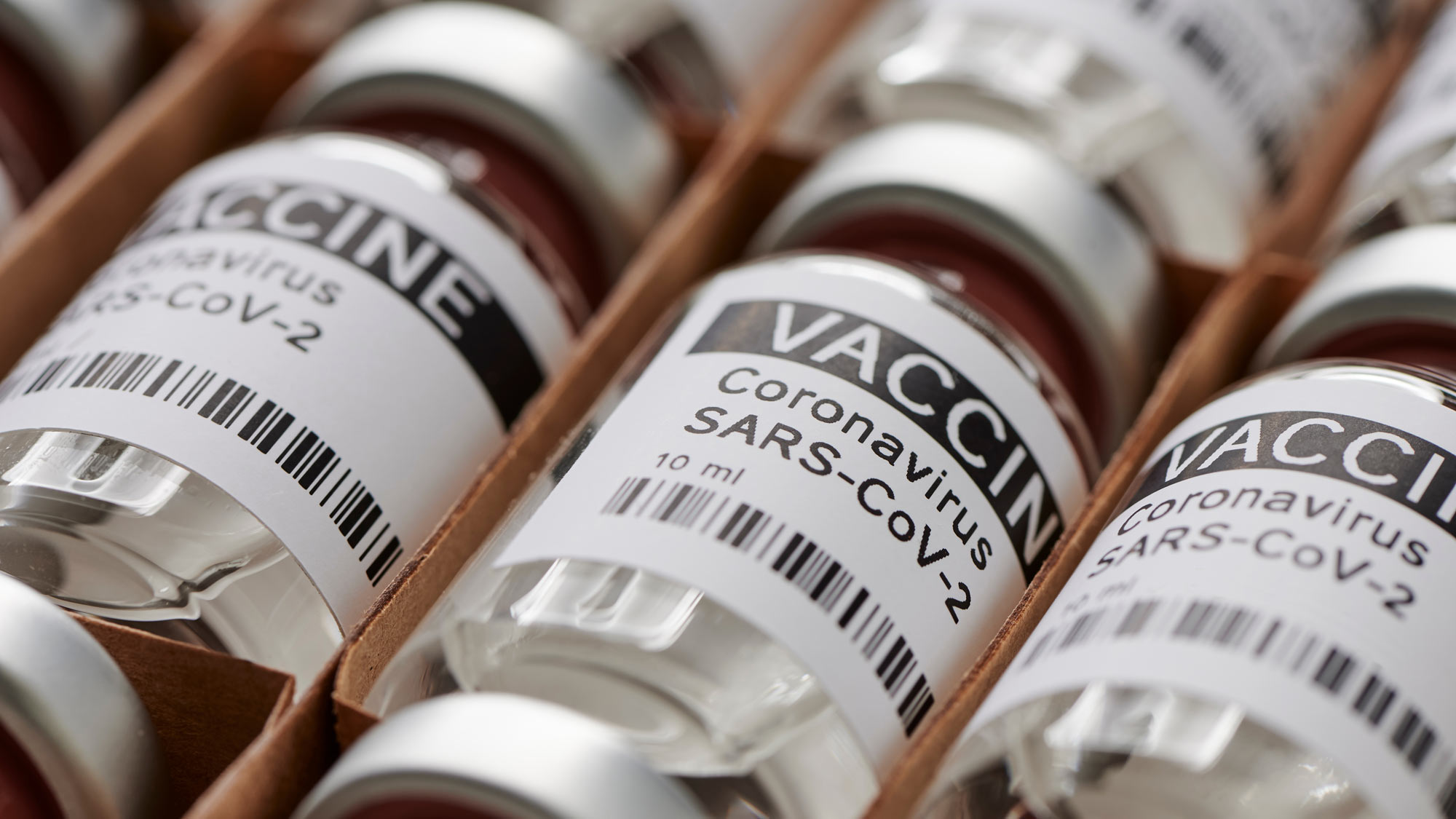
A COVID vaccine tracker and timeline is a useful way to sift through all the information out there, as the two vaccines by Pfizer and Moderna roll out across the U.S.
Since COVID-19 began spreading worldwide, scientists at biotech companies raced to develop multiple vaccines, test them for safety and efficacy, then produce them at a mass scale. Government and health officials have been developing guidelines on the best way to distribute the vaccine — who should get it first and how to deliver it.
In the U.S., the FDA has granted Pfizer-BioNTech and Moderna emergency approval. Several others vaccines are still in various phases of trials.
Already, numerous health care workers have been injected with the first of two doses. But most healthy American adults will likely not get the COVID vaccine until April, at the earliest. Health officials are encouraging everyone to continue wearing masks and social distancing.
Stay up-to-date with our COVID vaccine tracker and timeline.
Latest COVID vaccine news
- The government has made a deal with Pfizer to buy an additional 100 million doses of its vaccine (NBC News)
- Pfizer and Moderna are testing their vaccines against the UK coronavirus variant (CNN)
- Dr. Anthony Fauci gets the Moderna vaccine on live TV (Vox)
COVID vaccine tracker: Which vaccines are approved?
In the U.S., two vaccines has been approved by the FDA: Pfizer-BioNTech and Moderna.
Here's a look at the leading vaccines in development for use in the U.S. (source: The New York Times).
Get instant access to breaking news, the hottest reviews, great deals and helpful tips.
| Developer | Type | U.S. Status |
|---|---|---|
| Pfizer-BioNTech | mRNA | Emergency use approved |
| Moderna | mRNA | Emergency use approved |
| Johnson & Johnson | Adenovirus | Phase 3 trial |
| Oxford-AstraZeneca | Adenovirus | Phase 3 trial |
| Novavax | Protein | Phase 3 trial |
COVID vaccine timeline: When can I get the shot?
The Centers for Disease Control and Prevention has posted guidelines for distributing the vaccine, but each state has the final word.
Their recommendations prioritize health care workers and the staff and residents at long-term care facilities. They are followed by: critical and essential workers, people at high risk for severe COVID-19 illness due to underlying medical conditions and people 65 years and older. The last group is the general adult population.
Right now, the vaccines are not approved for children. Pfizer is testing their vaccine on kids 12 and older, while Moderna is still recruiting for its trial.
Here's an estimated timeline of COVID vaccine distribution.
Current
COVID vaccinations are already taking place across the country, using the Pfizer-BioNTech and Moderna vaccines. States are starting with the nation's 21 million healthcare workers and 3 million residents of long-term care facilities.
Moncef Slaoui, chief advisor to the federal government's Operation Warp Speed, has estimated that 20 million Americans could get a COVID-19 shot before the end of 2020.
January/February 2021
The vaccines will continue to roll out to priority groups, including essential workers, immunocompromised people and the elderly. The process could speed up depending on the approval of more vaccines currently in Phase 3 trials, such as Oxford-AstraZeneca and Johnson and Johnson.
Spring/early summer 2021
Dr. Anthony Fauci, the nation’s top infectious disease expert, has said that average, healthy Americans can expect to get their first doses as early as April and through July.
You can get a sense of where you stand "in line" for your shot with a COVID-19 vaccine calculator.
Where are the COVID vaccine doses going?
All 50 states are receiving shipments of the vaccines, at varying amounts. Here's what each state expects to get by the end of 2020, according to The Washington Post.
Alabama
Pfizer: 41,000 | Moderna: 220,000
Alaska
Pfizer: 6,300 | Moderna: 32,000
Arizona
Pfizer: 58,000 | Moderna: 440,000
Arkansas
Pfizer: 25,000 | Moderna: 130,000
California
Pfizer: 130,000 | Moderna: 1,800,000
Colorado
Pfizer: 47,000 | Moderna: 190,000
Connecticut
Pfizer: 32,000 | Moderna: 170,000
Delaware
Pfizer: 8,800 | Moderna: 26,000
District of Columbia
Pfizer: 6,800 | Moderna: 34,000
Florida
Pfizer: 180,000 | Moderna: 990,000
Georgia
Pfizer: 92,000 | Moderna: 470,000
Hawaii
Pfizer: 13,000 | Moderna: 65,000
Idaho
Pfizer: 14,000 | Moderna: 89,000
Illinois
Pfizer: 110,000 | Moderna: 570,000
Indiana
Pfizer: 55,000 | Moderna: 300,000
Iowa
Pfizer: 26,000 | Moderna: 200,000
Kansas
Pfizer: 24,000 | Moderna: 170,000
Kentucky
Pfizer: 38,000 | Moderna: 150,000
Louisiana
Pfizer: 40,000 | Moderna: 210,000
Maine
Pfizer: 13,000 | Moderna: 58,000
Maryland
Pfizer: 51,000 | Moderna: 210,000
Massachusetts
Pfizer: 60,000 | Moderna: 360,000
Michigan
Pfizer: 84,000 | Moderna: 340,000
Minnesota
Pfizer: 47,000 | Moderna: 230,000
Mississippi
Pfizer: 25,000 | Moderna: 130,000
Missouri
Pfizer: 52,000 | Moderna: 280,000
Montana
Pfizer: 9,800 | Moderna: 49,000
Nebraska
Pfizer: 17,000 | Moderna: 85,000
Nevada
Pfizer: 25,000 | Moderna: 190,000
New Hampshire
Pfizer: 13,000 | Moderna: 50,000
New Jersey
Pfizer: 76,000 | Moderna: 400,000
New Mexico
Pfizer: 18,000 | Moderna: 94,000
New York
Pfizer: 170,000 | Moderna: 900,000
North Carolina
Pfizer: 86,000 | Moderna: 470,000
North Dakota
Pfizer: 6,800 | Moderna: 27,000
Ohio
Pfizer: 100,000 | Moderna: 530,000
Oklahoma
Pfizer: 33,000 | Moderna: 200,000
Oregon
Pfizer: 35,000 | Moderna: 270,000
Pennsylvania
Pfizer: 120,000 | Moderna: 590,000
Rhode Island
Pfizer: 10,000 | Moderna: 39,000
South Carolina
Pfizer: 46,000 | Moderna: 240,000
South Dakota
Pfizer: 7,800 | Moderna: 30,000
Tennessee
Pfizer: 57,000 | Moderna: 310,000
Texas
Pfizer: 220,000 | Moderna: 1,600,000
Utah
Pfizer: 26,000 | Moderna: 180,000
Vermont
Pfizer: 5,900 | Moderna: 30,000
Virginia
Pfizer: 72,000 | Moderna: 550,000
Washington
Pfizer: 62,000 | Moderna: 340,000
West Virginia
Pfizer: 17,000 | Moderna: 110,000
Wisconsin
Pfizer: 50,000 | Moderna: 260,000
Wyoming
Pfizer: 5,000 | Moderna: 26,000
How many COVID vaccine doses are available?
Pfizer-BioNTech made a deal with the U.S. government to provide 100 million doses by the end of 2020.
The New York Times reported that the government passed up a chance during the summer to order another 100 million doses, but they are now in negotiations for more supply.
The government paid Moderna $1.5 billion for 100 million doses and followed up with an order for the same amount to be delivered in the second quarter of 2021.
Both the Pfizer and Moderna vaccines require two doses. Thus, 100 million doses can vaccinate 50 million people. The U.S. population is about 330 million people.

Kelly is the managing editor of streaming for Tom’s Guide, so basically, she watches TV for a living. Previously, she was a freelance entertainment writer for Yahoo, Vulture, TV Guide and other outlets. When she’s not watching TV and movies for work, she’s watching them for fun, seeing live music, writing songs, knitting and gardening.
